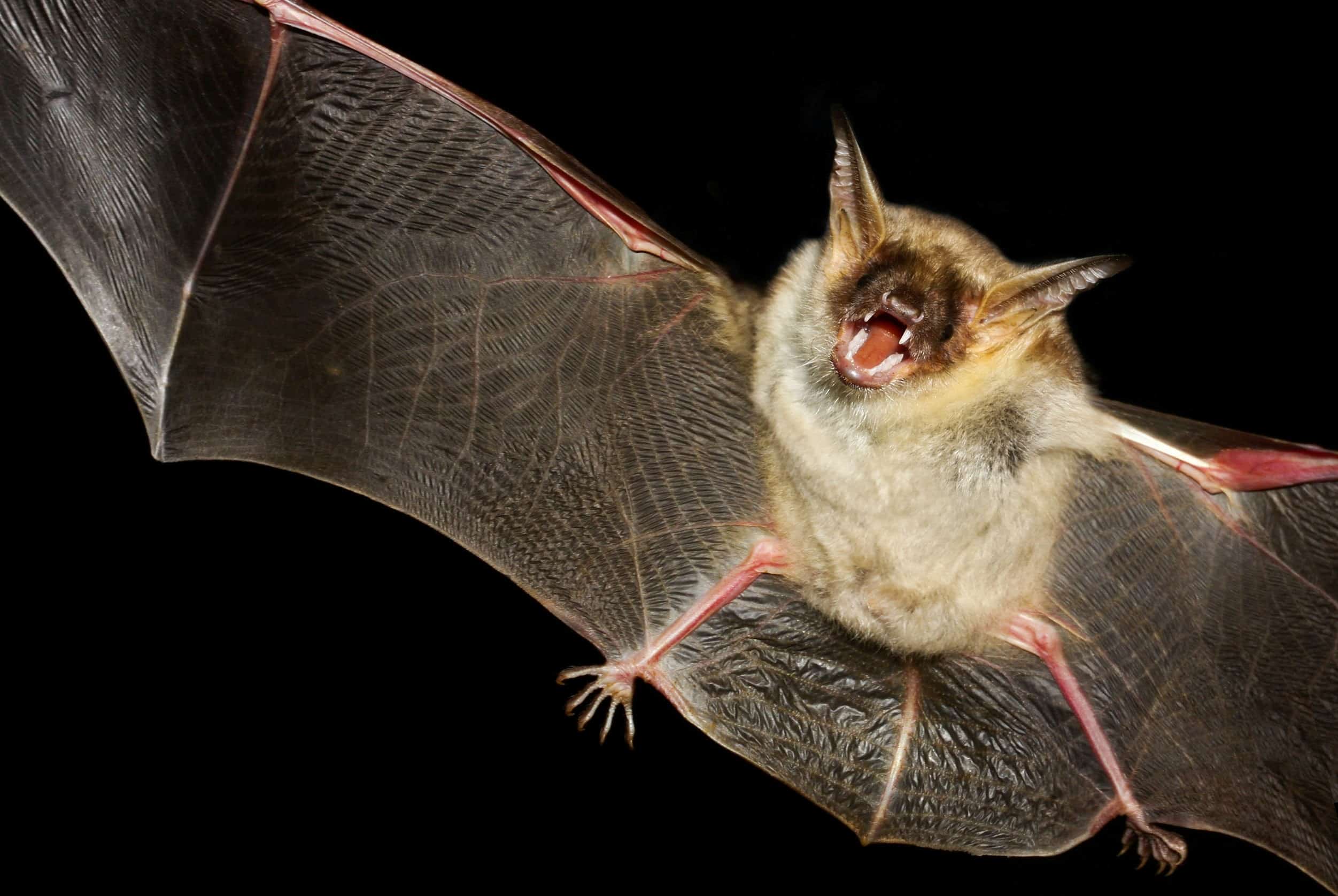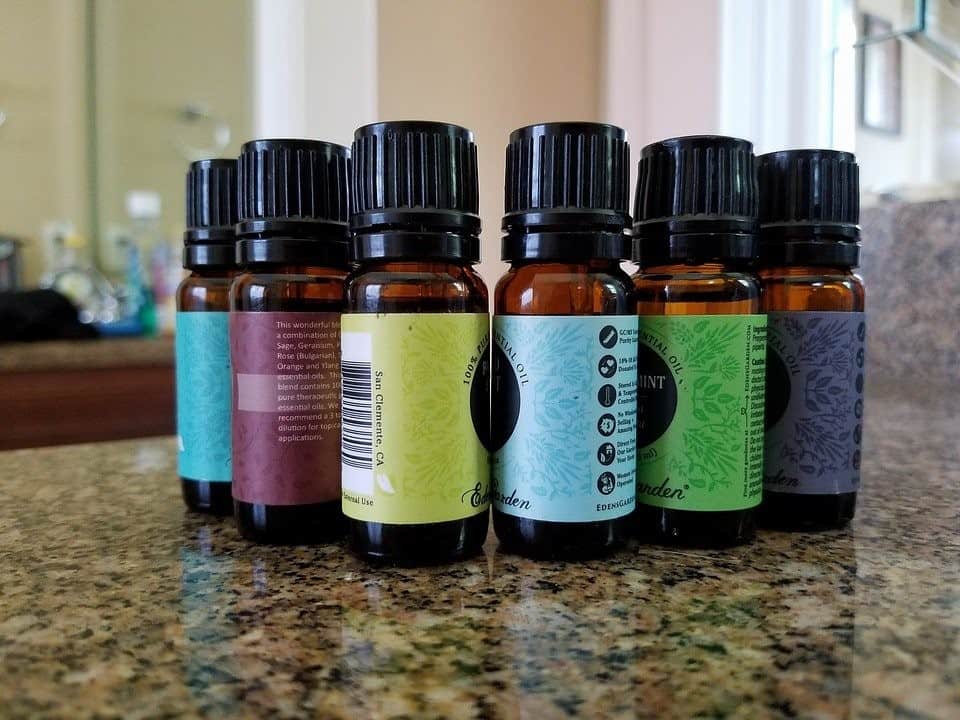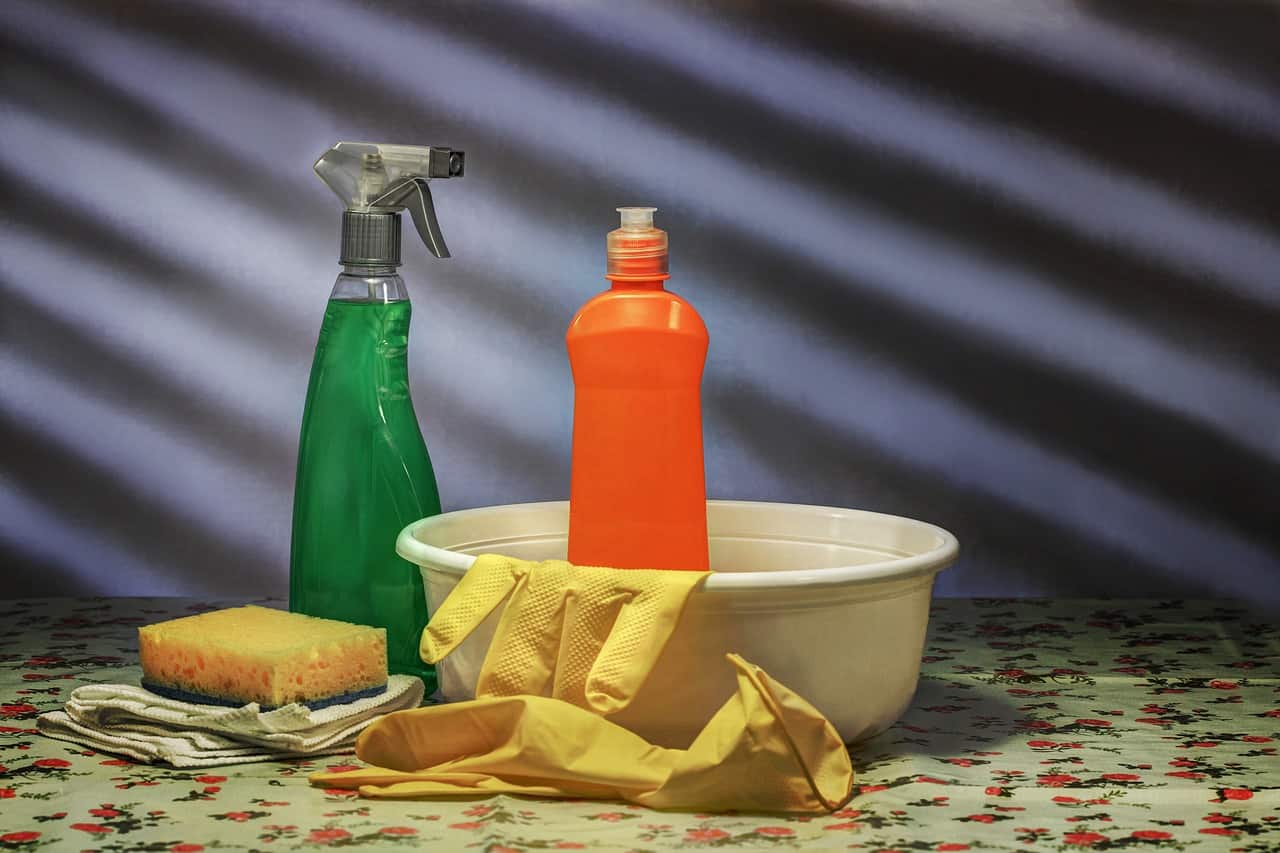Bats can be annoying invaders in your home, slipping through little cracks or windows and making an absolute mess of things. They’re also a protected species, which makes killing or even capturing them an unacceptable course of action. Coaxing them to leave is your only valid option.
Bats aren’t aggressive or violent but are known carriers of some bad diseases. The best way to get rid of them is by overwhelming their sense of smell. Peppermint, Eucalyptus, and Cinnamon essential oils are great for this purpose. Once that’s done, be sure to thoroughly clean the mess left behind. Play it safe and plug any gaps they might use to come back.
Contrary to popular belief, bats don’t make a habit of attacking humans. That doesn’t mean they’re harmless. Below are a few reasons why they need to be expelled out of your homes immediately.
Why Are Bats Problematic?

Bats are known carriers for a few dangerous diseases. One of the most notorious infections they pass along is Histoplasmosis. People catch this breathing in fungal spores, leading to chest pain, fevers, and general unwellness. This occasionally develops into pneumonia for people with weakened immune systems. It’s commonly passed along in bat droppings (“guano”).
Bats are also at significant risk of carrying rabies. Bats actually topped every other wildlife species in the rabid population, contributing 33% of all wildlife rabies cases in the year 2018. Fortunately, rabies is only transmitted through direct means such as broken skin or an exchange of bodily fluids. It shouldn’t be a problem if you avoid entering a shared space with these unwanted tenants.
Their urine is also a problem as it contains high concentrations of uric acid. Left unchecked, this could cause structural compromises over time due to its corrosive properties. It’s known to ruin waterproofing, crack wooden panels, and alter metal compositions over time.
Bats are usually drawn to residential areas due to the scent of food scraps in the garbage. All species of bats have an excellent sense of smell. You can use this against them, though. One of the best ways to drive them off is by overwhelming their little noses!
Why Scare Them Off Using Smell?
While you could try to drive out bats with other methods, leveraging their keen sense of smell is the most feasible method for non-professionals. It gives the best returns for your level of investment and is more consistent than banking on light or sound.
Bats are very attached to their roost locations. It takes persistence to drive them off for good. Some sites recommend using light or sound to accomplish this, but we’ll discuss why both of them will likely fall short as your primary deterrent.
Why not Light?

Light makes for a great way to discourage bats, but only on a short-term basis. Bats already deal with light in their normal sleep cycles. All you’ll do is throw off their circadian rhythm for a short while. Over time they’ll simply work around that limitation by finding covered nooks and hideaways for shelter, making them even harder to flush out.
It’s also not very practical to keep lights running to achieve the desired result. Constant floodlight use can cost nearly $50 a day, and might just drive them deeper into your home.
A better method to bother them is via hanging reflective surfaces in suspected colony dwellings. Mirrors or aluminum foil can catch and reflect natural light in the area, causing them general discomfort at a fraction of the cost and effort.
Why not Sound?
Sound shares a lot of limitations with light for deterring bats. Ultrasonic emitters have been claimed to drive them away, but won’t keep them from coming back. Frankly, using UE devices isn’t all that different from just startling them with normal noise. Bats are driven off by the possibility of danger. If no threats come up, they’ll just register it as part of their new environment.
Ultrasonic emitters ward off bats by interfering with echolocation, their main means of navigation. It’s not going to be particularly effective for places bats idle in – UE devices are normally used to guard wind turbines rather than potential roost locations. They’re also quite expensive for a niche product, with dedicated anti-bat noise emitters falling between $40-$50.
You can still use sound to make their stay as uncomfortable as possible. Noisemakers or intermittent alarms can be an effective means to rattle unwanted bat colonies. Just don’t depend on them as your main method because your mileage may vary.
Summary
In general, scent repellants are easier, cheaper, and more reliable for long-term results. Below are a few solid recommendations to evict unwanted bats.
Good Essential Oils To Get Rid Of Bats

While other essential oils can be used, these three offer notable advantages for this problem.
Peppermint (Accessibility)
Bats hate peppermint, and it’s also one of the best recommendations due to how easy it is to get ahold of. Peppermint is a staple essential oil in the market. It’s also usually cheaper to boot.
Peppermint plants naturally have menthol in their composition, unlike other essential oils that have it diluted in. It’s especially effective, but some people can find the scent of it overwhelming.
Eucalyptus (Bat Mites)
Eucalyptus makes for a decent replacement, being milder on the senses than peppermint. It’s also notably effective at dealing with mites, which bats occasionally introduce to households. Direct contact with Eucalyptus oil kills mites immediately, even when diluted in water.
Cinnamon (Mildness)
Cinnamon is great for people with sensitive noses. It lacks the pungency of the other two options, and you don’t even need essential oil for this! Ground or stick cinnamon can do a bang-up job.
Cinnamon essential oil is preferred against bats, though. Ground cinnamon doesn’t dissolve in liquids, so it won’t work very well in spray bottles. It does make for a good start if your house doesn’t have essential oils immediately on hand.
General Tips
Essential oils work best diluted in warm water. Three cups of it to a capful of oil is an effective ratio to maintain. Be sure to boil your water before adding the essential oils, followed by stirring for between two to five minutes. Let it cool to room temperature before filling the spray bottle.
Keep Pets Away
It’s important to remember that essential oils aren’t pure. They contain certain additives you might not immediately expect. Common inclusions render the oil dangerous to your pets, even if the base plant should be safe for them. For example, cinnamon by itself is okay for cats and dogs, but cinnamon essential oil can cause muscle weakness or even seizures in pets.
You also want them clear of the area regardless, as they might agitate the bat colony. Bats aren’t particularly violent, but pack a wicked bite to protect themselves. Their needle-like teeth are more than sufficient to penetrate your pet’s hide, passing along all sorts of bacteria and infection through broken skin. Their status as notorious rabies carriers further compound this danger for them.
Mix and Match
While each oil mentioned above offer their own benefits, they also happen to complement one another beautifully! Feel free to mix and match your choice picks to improve your experience. It also has the nice perk of raising bats’ olfactory discomfort without harming them.
We personally recommend blending peppermint and eucalyptus oil in 1:1 ratios. It smells wonderful for humans and awful for bats. Apply liberally for best results.
Other Precautions to Take
While essential oils are effective at getting them to leave, you still need to figure out both the why and how of the infestation. Otherwise, you risk the problem recurring, wasting all your efforts.
Cut off Entry Points

Close any open windows and doors in your house. Seal off cracks, gaps, and other unexpected entry points. Bats can squeeze through spaces as tiny as a half-inch in diameter – some species can even slip past crevices about six millimeters across. That’s about the size of a dime. Check your building thoroughly during the exclusion process.
Some sites suggest evicting bats by sealing off their entrances when they leave to forage. We urge you not to try this method just yet. It’s hard enough to identify every possible entry point bats might use. Doing so on a restrictive timer won’t be achievable for some structures.
It also carries another risk if you miss a bat before sealing off their entrances. The ones trapped inside are very likely to die of starvation. This runs you afoul of legal requirements, on top of posing a horrid biohazard risk. If they died somewhere inaccessible, it becomes even more problematic to deal with.
You’re not just evicting pesky bats here. You’re making it abundantly clear they aren’t welcome. Be sure to flush them out of your property before setting to work barring old entry points.
Cover your Trash

Bats are drawn to the scent of food, and one of the most common sources of that is mishandled garbage. Be sure to dispose of refuse properly – this goes double for food scraps. Wrap them properly so the odor won’t seep through, then cover them in lidded bins for security.
Fortunately, bats don’t claw or bite their way through containers. There’s no need to worry about them damaging your stuff. Most of the damages bats end up causing are due to their waste products rather than aggressive behavior.
Restrict Food Sources
Contrary to popular belief, bats aren’t normally bloodsuckers. Only three species out of over a thousand count as vampire bats, and they’re more likely to feed off cattle or strays than humans.
Most bats are omnivorous, enjoying fruit, nectar, or insects for meals. You’ll need to cut these off promptly to deter long-term residents in your home. Bats aren’t attached to feeding areas the same way they are to roost spots, so you’ll have an easier time keeping them away.
Bats can nibble on yields from trees or home gardens, robbing you of your hard work. You can deter them with similar methods that rendered your homes inhospitable earlier. Wind chimes can be hung off tree branches to rustle periodically. Aluminum foil can reflect ambient light to annoy them greatly. Lastly, you can also hang mesh netting off plant foliage to prevent direct access.
You might consider trying to cut off their insect access, but that’s unlikely to work very well. Most insects bats prey on are extremely hard to catch. They also tend to be very rapid breeders. It’s much easier to cut off their access to fruits than insects, so prioritize that to drive them off.
Cleanup

Just because the bats are out of your home doesn’t mean they stop causing damages. The waste they leave behind actually makes up the bulk of their danger.
Mites
Bat mites are a troublesome pest and can be hard to spot in your home. Certain essential oils like Eucalyptus kill them on contact, though effectiveness depends on the delivery method.
Rubbing alcohol solutions can be used in sprays to kill them. It also evaporates quickly, making it much safer to use around people and pets.
The hardest part about mites, in general, is how good they are at hiding. Moderate bat mite infestations can actually be dealt with by using the essential oils as intended – diffusing them!
Diffused vapors will do a better job finding their hideaways than your eyes ever will. This method also suffocates the mites in the process, meaning less work on your part. Serious cases might warrant professional exterminators, but prompt action can lower the likeliness of needing it.
Droppings
Deal with bat droppings properly. Guano is extremely dusty, and as mentioned above inhalation could lead to serious illnesses such as Histoplasmosis. Never try to sweep dry bat poop, as it releases dangerous elements when crumbled.
Bat pee is rich in uric acid, which has highly corrosive properties. It can destroy wooden floorboards by soaking through and expanding in the wood fiber. It also ruins carpet and metal over time and might transmit Leptospirosis – either to you directly or through mice in your house.
Use spray bottles with soapy water to dampen the waste, encouraging it to clump. This renders it easier to collect while lowering inhalation risk. Make sure to wear a mask and gloves. The former prevents inhalation of large particles while the latter lowers the risk of disease transmission through cuts or abrasions.
When cleaning, it’s recommended to use old cloth or mops you’re willing to part with. After clearing the bat waste products, disinfect the contaminated area with a diluted bleach solution (1:9 ratio bleach-to-water). Let it rest for at least 8 to 10 minutes before rinsing off the mix.
Pack all disposable cleaning materials used into an airtight bag before dumping them into the trash. Be sure to wash your hands properly afterward – we’d personally advise a long, cleansing shower after this whole ordeal.
Final Thoughts
Bats can be tricky to deal with since they’re a protected species. Essential oils can drive them off and are one of the most affordable ways to do so. While scaring them off is nice, you want to keep them away for good. Be sure to deal with factors that might have attracted them along with entry points they used to slip in. Clean thoroughly and it’ll be like they were never there to begin with!

